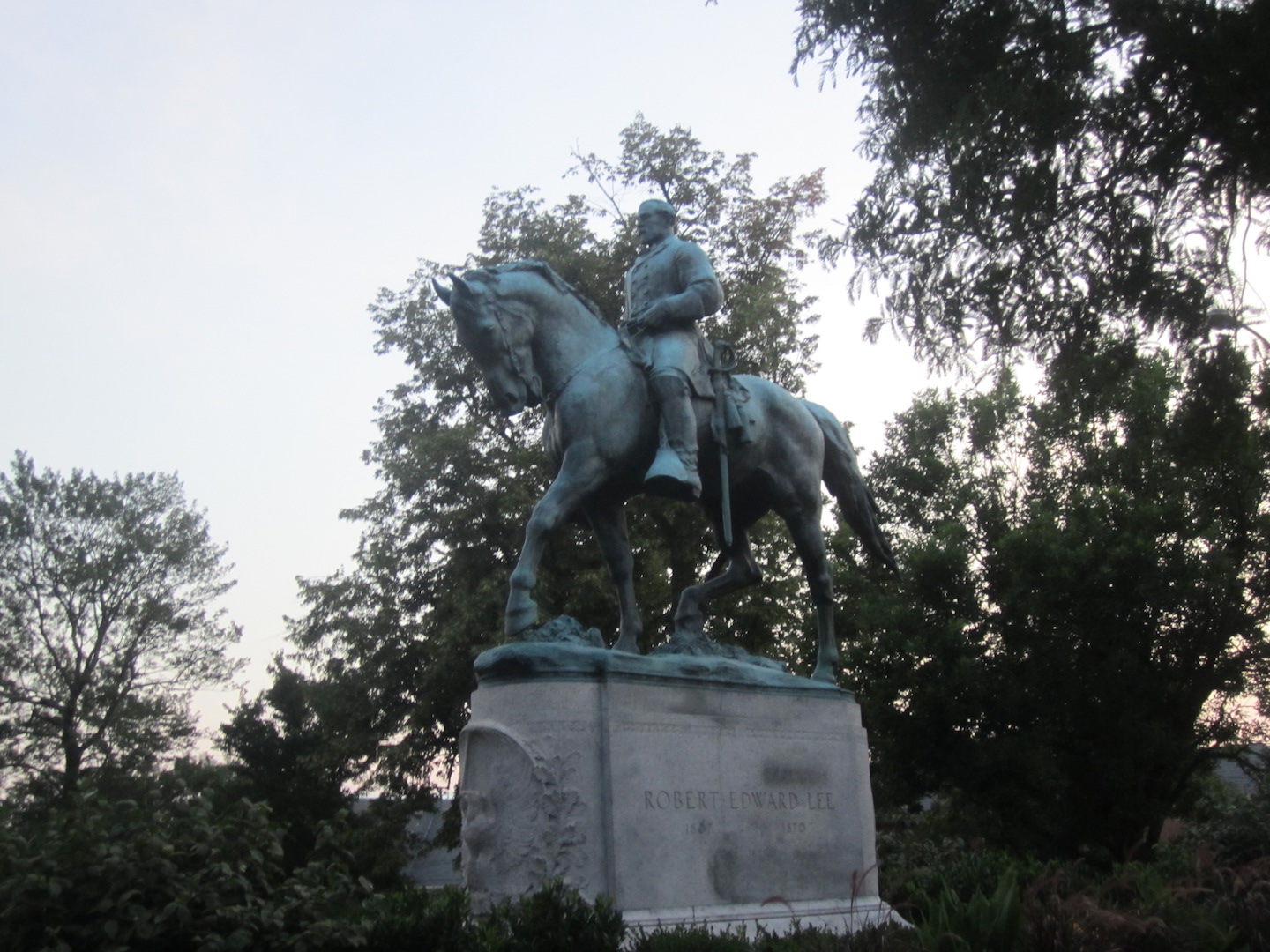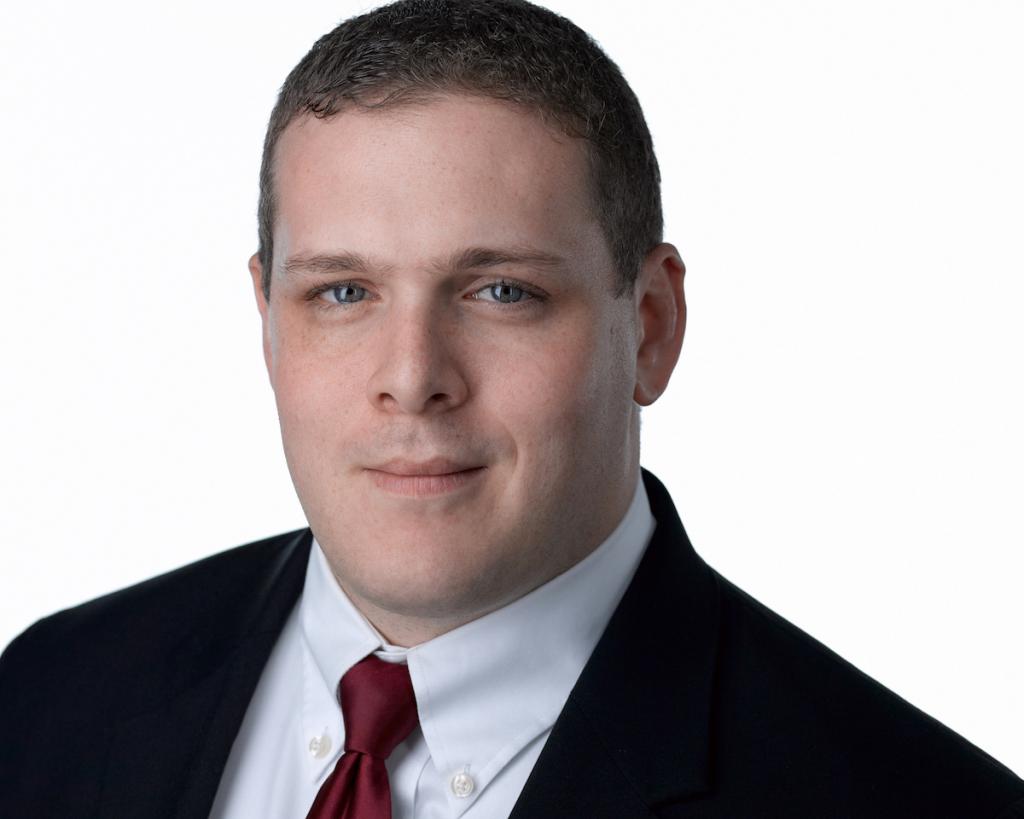The First Amendment on the Grounds in Charlottesville
On Friday, Aug. 11, I traveled to Charlottesville, Va., to attend my co-clerk’s wedding. I was generally familiar with the controversy over the removal of the Robert E. Lee statue but was not aware that white supremacist demonstrations were scheduled for the weekend. After the rehearsal dinner wrapped, I drove back to the hotel along Main Street.

Published by The Lawfare Institute
in Cooperation With

On Friday, Aug. 11, I traveled to Charlottesville, Va., to attend my co-clerk’s wedding. I was generally familiar with the controversy over the removal of the Robert E. Lee statue but was not aware that white supremacist demonstrations were scheduled for the weekend. After the rehearsal dinner wrapped, I drove back to the hotel along Main Street. As we approached the Rotunda—the center of the campus designed by Thomas Jefferson himself—the traffic ahead suddenly slowed to a crawl. In the distance, we saw some lights. At first glance, it appeared to be a candlelight vigil, but we quickly realized what was going on. Hundreds of white nationalists with torches were walking down the steps of the Rotunda, chanting something incoherent, though the word “Jews” was distinctly pronounced. The sight was surreal; I was more stunned than afraid.
Our hotel was a few blocks away. We drove back to the room and then checked #Charlottesville on Twitter to see what was going on. Moments earlier, the police had declared the gathering an unlawful assembly and broke it up. (Some reports suggest pepper spray was fired.)
This scene, however, was but a prelude. Saturday at noon, the Nazis planned to assemble at Emancipation Park, formerly known as Lee Park, to protest the removal of the Lee statue. Unsure of what would happen, we decided to spend the day out of town at Montpelier, the estate of James Madison. There was a strangeness to visiting the home of the primary author of the First Amendment while not that many miles away, that same First Amendment was enabling contemptible bigots to inflict violence and, tragically, the loss of life.
The conflict in Charlottesville will be studied in many quarters for many years, but this early entry focuses on the role played by the First Amendment.
Kessler v. City of Charlottesville
On May 30, Jason Kessler applied for a permit to hold a rally on Aug. 12 in Emancipation Park. According to his attorneys at the ACLU and the Rutherford Institute, he chose that location because the “Plaintiff wishes to communicate a message that relates directly to the Park—specifically, his opposition to the City’s decisions to rename the Park, which was previously known as ‘Lee Park,’ and its plans to remove a statue of Robert E. Lee from the Park.” (I have been quite critical of the ACLU for caving on certain free-speech issues, but here, and with its defense of Milo Yiannopoulos, the organization is staying true to its historic mission.) Kessler estimated that 400 people would attend and stated that he “absolutely intends to have a peaceful rally” and his group would “avoid violence.” Initially, the city of Charlottesville granted Kessler’s application and those of other counter-protesters. After the application was granted, however, business leaders in Charlottesville urged that the rally be moved to McIntire Park, a mile away. McIntire Park is much larger and has far fewer entrances. The topic was also discussed at City Council meetings. Members of the council spoke out against the white supremacists on social media.
On Aug. 7, the city revoked Kessler’s permit, “modif[ying]” the application to allow a rally in the larger McIntire Park. The city cited “safety concerns” based on the number of people expected to attend Kessler’s rally. Specifically, the government explained that “holding a large rally at Emancipation Park poses an unacceptable danger to public order and safety.” No sources were provided to justify those concerns that had “come to the City’s attention.” The government cited “conservative” estimates of “no less than 1,000, with as many as 2,000 or more counter-demonstrators in attendance” based on “internet-based marketing efforts by the Plaintiffs.” While Kessler’s permit was revoked, the city did not revoke the permits of counter-protesters who had been approved to rally within blocks of Emancipation Park.
On Aug. 10, Kessler sought a preliminary injunction in the U.S. District Court for the Western District of Virginia, barring the city from revoking the permit to protest in Lee Park. The motion stated that “the City will suffer no harm to its legitimate interests if preliminary relief is granted. Regardless of where the demonstration takes place, the City has an obligation to secure and protect the safety of the demonstrators and the public.” The lawyers added that “[t]he City's expressed desire to provide security and protection at an alternative site because it would be easier to do so . . . is not a sufficiently substantial governmental interest to override Plaintiff's First Amendment right.”
The following day, the city of Charlottesville filed a brief in opposition to Kessler’s motion for a preliminary injunction. The government argued that the decision to move the plaintiff’s protest from Emancipation Park to McIntire Park “was justified without reference to speech content or the Plaintiff‘s viewpoint, [] was narrowly tailored to serve a significant governmental interest, and [] left open ample alternative channels for communication.” The government added that Kessler’s complaint “does not contain sufficient allegations to support a claim that the City and Mr. Jones were motivated by fears about how counter-protesters will respond to the Plaintiff‘s rally.”
The judiciary would disagree. After a hearing, on the evening of Friday, Aug. 11, Judge Glen E. Conrad issued a preliminary injunction, requiring the city of Charlottesville to allow the white supremacists to assemble in Emancipation Park. (The federal courthouse is about three blocks from that park.) The court dismissed the government’s speculation about the crowd size, concluding that “there is no evidence to support the notion that many thousands of individuals are likely to attend the demonstration.” Crucial to Judge Conrad’s analysis was the fact that Kessler’s permit was revoked but that the permits of counter-protesters had not been:
The disparity in treatment between the two groups with opposing views suggests that the defendants' decision to revoke Kessler's permit was based on the content of his speech rather than other neutral factors that would be equally applicable to Kessler and those protesting against him. This conclusion is bolstered by other evidence, including communications on social media indicating that members of City Council oppose Kessler's political viewpoint.
Leave aside for now the significance of the court looking to statements on social media by some in government that conflict with the city’s official position to find animus. The court’s analysis focused exclusively on the irreparable harm that would be faced by Kessler. There was scant mention of possible harms to public safety. The closest the court came to addressing this point was noting that “a change in the location of the demonstration would not eliminate the need for members of the City's law enforcement, fire, and emergency medical services personnel to appear at Emancipation Park. Instead, it would necessitate having personnel present at two locations in the City.” Beyond these sentiments, the opinion hinged almost entirely on the fact that the plaintiffs were likely to succeed on the merits.
Free Speech on the Grounds
In hindsight, the value of the protesters’ speech was minimal; the cost to public safety was tragic. Shortly after Judge Conrad’s ruling was issued, the torch-lit demonstration began at the Rotunda. Many were injured as torches and other projectiles were thrown. Roughly 12 hours later, riots commenced at Emancipation Park. It is rare that a judicial decision can have such an immediate and palpable effect on both public safety and individual liberty.
By the end of the day, there were more than three dozen injuries. Heather D. Heyer was killed. Two Virginia State troopers died when their helicopter crashed outside of Charlottesville. (I observed the helicopter hovering over Emancipation Park throughout the day.) Shortly after the violence began, the mayor of Charlottesville tweeted, “For all watching events in crowded, downtown Cville: this is EXACTLY why City tried to change venue to McIntire-but court wouldn’t allow.” Had the protest been held at the larger McIntire Park, perhaps the police could have kept a stronger control on crowd size and automobile traffic. But perhaps not.
As a matter of First Amendment law, Judge Conrad’s opinion is correct. The city’s decision to revoke the plaintiff’s permit but not those of the counter-protesters gave rise to a very strong presumption that the decision was based on the content of the nationalists’ speech. My understanding is that the city merely overlooked revoking the other permits. This blunder, however, provided the basis of the court’s decision.
Moreover, there was no concrete evidence that the crowd size would increase beyond the speculation based on social-media traffic. Merely asserting a generalized interest in safety, without more information, cannot justify the revocation of the permit in this manner. Indeed, had the permit never been granted initially, the city could have avoided the presumption of animus against the plaintiffs’ bigoted speech.
Much attention will be paid to how the Charlottesville Police Department managed the affair. The city’s attorneys also deserve some scrutiny. Had the case been lawyered better from the outset, the analysis would be much closer. If the government could have shown that in the larger park, traffic could have been better cordoned off, the requisite scrutiny may have been met. But here we are.
Social Costs of the Bill of Rights
The constitutional questions here are difficult and complex. Justice Robert H. Jackson states the issue far better than I could. Here is an excerpt from his iconic dissent in very apt case of Terminiello v. Chicago:
[U]nderneath a little issue of Terminiello and his hundred-dollar fine lurk some of the most far-reaching constitutional questions that can confront a people who value both liberty and order. This Court seems to regard these as enemies of each other and to be of the view that we must forego order to achieve liberty. So it fixes its eyes on a conception of freedom of speech so rigid as to tolerate no concession to society's need for public order. . . .
But if we maintain a general policy of free speaking, we must recognize that its inevitable consequence will be sporadic local outbreaks of violence, for it is the nature of men to be intolerant of attacks upon institutions, personalities and ideas for which they really care. In the long run, maintenance of free speech will be more endangered if the population can have no protection from the abuses which lead to violence. No liberty is made more secure by holding that its abuses are inseparable from its enjoyment. We must not forget that it is the free democratic communities that ask us to trust them to maintain peace with liberty and that the factions engaged in this battle are not interested permanently in either. . . .
This Court has gone far toward accepting the doctrine that civil liberty means the removal of all restraints from these crowds and that all local attempts to maintain order are impairments of the liberty of the citizen. The choice is not between order and liberty. It is between liberty with order and anarchy without either. There is danger that, if the Court does not temper its doctrinaire logic with a little practical wisdom, it will convert the constitutional Bill of Rights into a suicide pact.
The Battle of Charlottesville illustrates, once again, the social costs imposed by the Bill of Rights.



.jpg?sfvrsn=676ddf0d_7)

